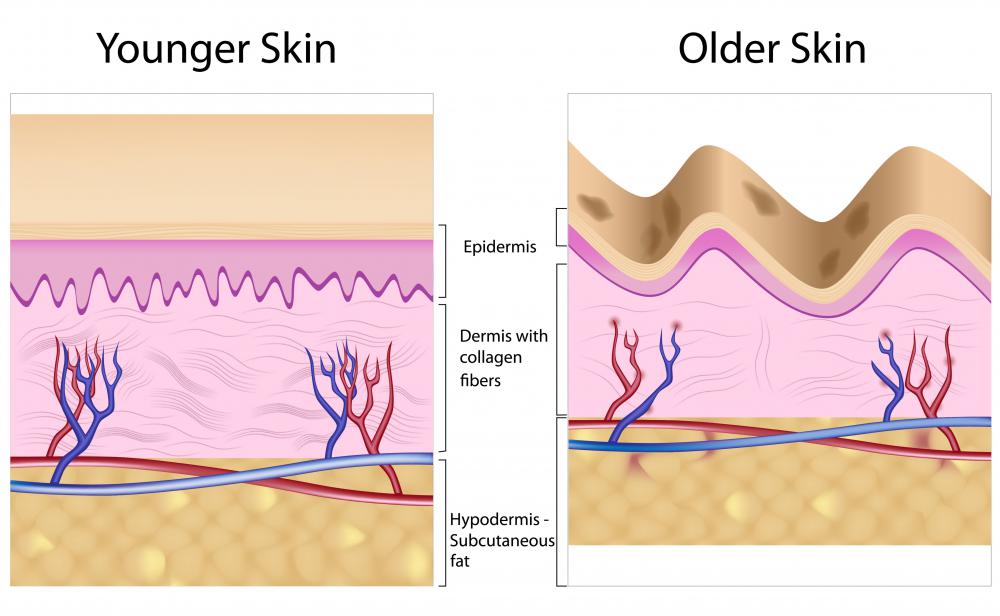At WiseGEEK, we're committed to delivering accurate, trustworthy information. Our expert-authored content is rigorously fact-checked and sourced from credible authorities. Discover how we uphold the highest standards in providing you with reliable knowledge.
What Are the Different Types of Injectable Fillers?
Injectable fillers, often called “liquid face-lifts,” are substances injected beneath the surface of the skin to reduce the appearance of fine lines and wrinkles, improve the skin’s contour, or increase tissue volume. The fillers are made from numerous different substances, including collagen, hyaluronic acid, clostridium botulinum bacterium, microspheres containing calcium and phosphate ions, and fat cells. Some types use materials harvested from the patient’s body while others use synthetic materials or substances harvested from animals.
Collagen, which has been used since the 1970s to treat wrinkles, is one of the oldest types of injectable fillers. The protein is naturally found in the human body and supports the bones, joints, skin, and ligaments. Collagen used in injectable fillers is typically derived from cows and can cause an allergic reaction in some patients, so dermatologists generally perform a skin test prior to injecting the substance into a patient. Some forms of the treatment use collagen harvested from the patient or other human donors, which decreases the risk of an adverse reaction.

Hyaluronic acid is another substance naturally found in the human body, particularly in the eyes and joints, where it provides cushioning and lubrication. The hyaluronic acid used in injectable fillers is harvested from roosters or made in a laboratory. While it is most commonly used during eye surgeries, such as cataract removal or corneal transplants, it is also used in the dermatology industry as lip filler. Side effects of hyaluronic injections include pain and burning at the site of the injection.

Clostridium botulinum bacterium injectable fillers are used typically used to treat facial wrinkles. The bacterium is the same toxin that causes botulism, a life-threatening type of food poisoning. It works by blocking the nerves or paralyzing the muscles in the area being treated. This type of injectable filler can cause side effects such as flu-like symptoms and upset stomach. The clostridium botulinum bacterium is the deadliest toxin known to humans and should only be used under the guidance of a qualified medical professional.

Injectable fillers made from microspheres containing synthetically produced calcium and phosphate ions may help replenish skin volume. The substance breaks down in the body over time, releasing the ions and stimulating collagen production. This type of filler may cause fewer allergic reactions in patients because the body is already accustomed to calcium and phosphate.
Fat harvested from the patient can also be used to produce injectable fillers through a process called “autologous fat transfer.” During the procedure, a dermatologist draws fat from the buttocks or thigh using low-power liposuction and injects it in the area being treated. The body reabsorbs most of the fat over the next several months, but enough remains behind to produce the desired effect. Using fat from the patient’s own body reduces the risk of an allergic reaction.
A consultation with a dermatologist can help patients decide on the best type of injectable filler for their needs. Several factors will be considered when making the decision, including medical history and allergies to certain substances. Prices vary depending on the type, and injectable fillers are typically not covered by health insurance.
AS FEATURED ON:
AS FEATURED ON:













Discuss this Article
Post your comments